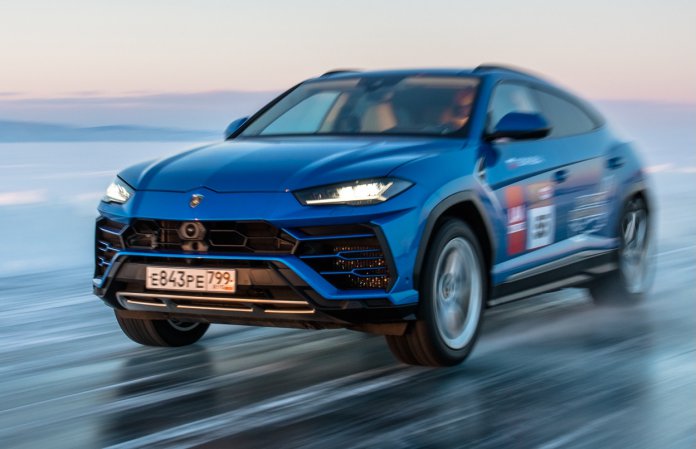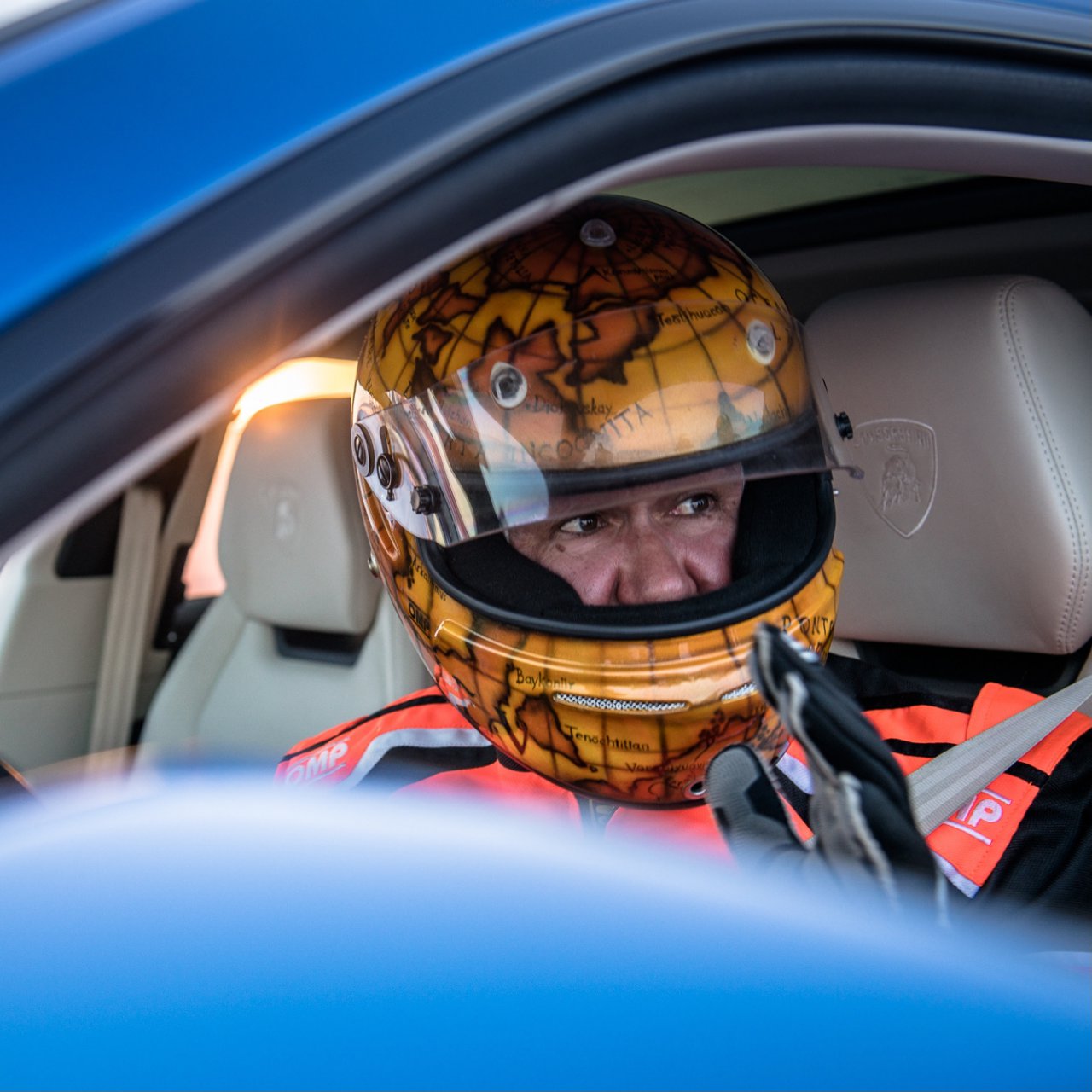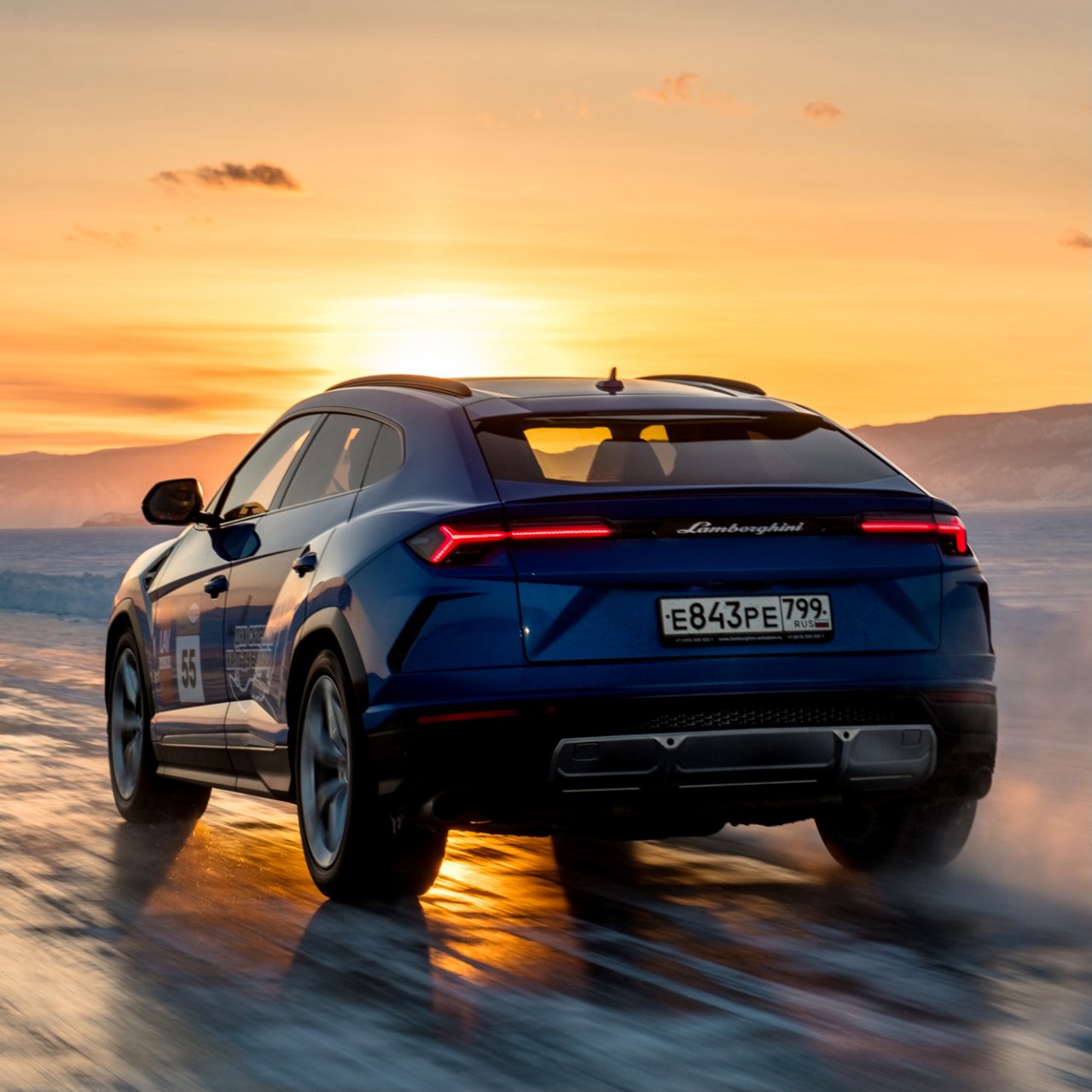You may recall that in the past year, Porsche has claimed a series of world records for such things as the slalom run, the longest drift and the fastest speed achieved indoors without crashing into a wall. Apparently not to be outdone, Lamborghini has claimed a world record for the fastest speed on ice.
During the recent Days of Speed on Lake Baikal in Russia, a Lamborghini Urus SUV was driven to a top speed of 298 km/h (184.7 mph) with an average speed of 114 km/h (70.6 mph) from a standing start on a 1,000-meter course. The driver was 18-time Days of Speed record holder Andrey Leontyev and the event was registered by an official FIA member, the Russian Automotive Federation.
Lamborghini noted that the Urus “demonstrated exceptional performance and extraordinary handling despite reduced traction due to the ice’s slippery conditions and strong gusts of wind.”

“When I saw the frozen Lake Baikal for the first time I immediately realized that it was a perfect track,” Leontyev was quoted in the Italian automaker’s announcement. “Records were being set on impeccable-quality asphalt roads and salt lakes around the world, but in Russia we don’t have any of that. Instead, we have a lot of ice, and that’s how the idea came to me.
“So I decided to come to Baikal with a friend and did some racing. Nobody thought this would get us anywhere, but we were determined to make it something big. In the past 10 years, we gained FIA recognition to make our ice-track records official. We fully abide by all FIA regulations and we have a legitimate record-setting arena.”
Lamborghini said Leoyntev describes his endeavors as pure, top-class sport, with the need for attention to the psychological aspects as well as to technical preparation.
“In motorsports, there are two equally important components: the driver and the vehicle,” Leoyntev said. “If you want to set records, you can’t just focus on one. The skills of the driver, the reliability and safety of the vehicle, and the onboard equipment can help the driver maximize their performance: that is the magic combination. In our races, we push the equipment and the cars to their limits, far beyond their standard operating conditions.
“You always have to remember that there’s a person driving and achieving those results, but without an amazing car, nothing would be achieved.”
The Urus has a 650-horsepower twin-turbo V8 engine that propels it — on dry pavement — to 100 km/h (62 mph) in 3.6 seconds and to a top speed of 305 km/h (189 mph).
“Urus’ biggest advantage is its absolute versatility: it is extremely easy and comfortable to operate in any situation, while feeling like you’re a strong unit with it,” Leoyntev is quoted. “Despite its significant power, supercar roots and supercar behavior, the Urus is forgiving and obliges the pilot.
“I am certain that even a fairly inexperienced driver could still perform well in this vehicle if they were to step onto the race track. But that same person would also be able to drive the car to their summer home or to the countryside with friends.”
Leoyntev compared the ice-covered lake to “an off-grid test lab.”
“Automotive engineers can see how their products behave when pushed to the limit on a surface that is 10 times more slippery than asphalt in torrential rain,” he said. “Which means, if you manage to stay in control of a vehicle that’s racing at 300 km/h (186 mph) over natural uneven ice, jumping over bumps with the suspension constantly being pushed to the limit, then driving a car on wet or icy asphalt at 90 km/h (56 mph) doesn’t seem like that big of a deal.
“The techniques you develop under extreme conditions can be easily applied in day-to-day life, making driving safer, simpler, and more fun. Modern car designers and engineers make every effort to ensure that vehicles are as safe as possible, while still letting people really enjoy the experience of driving.
“And the joy of driving is not something I’m willing to give up.”







